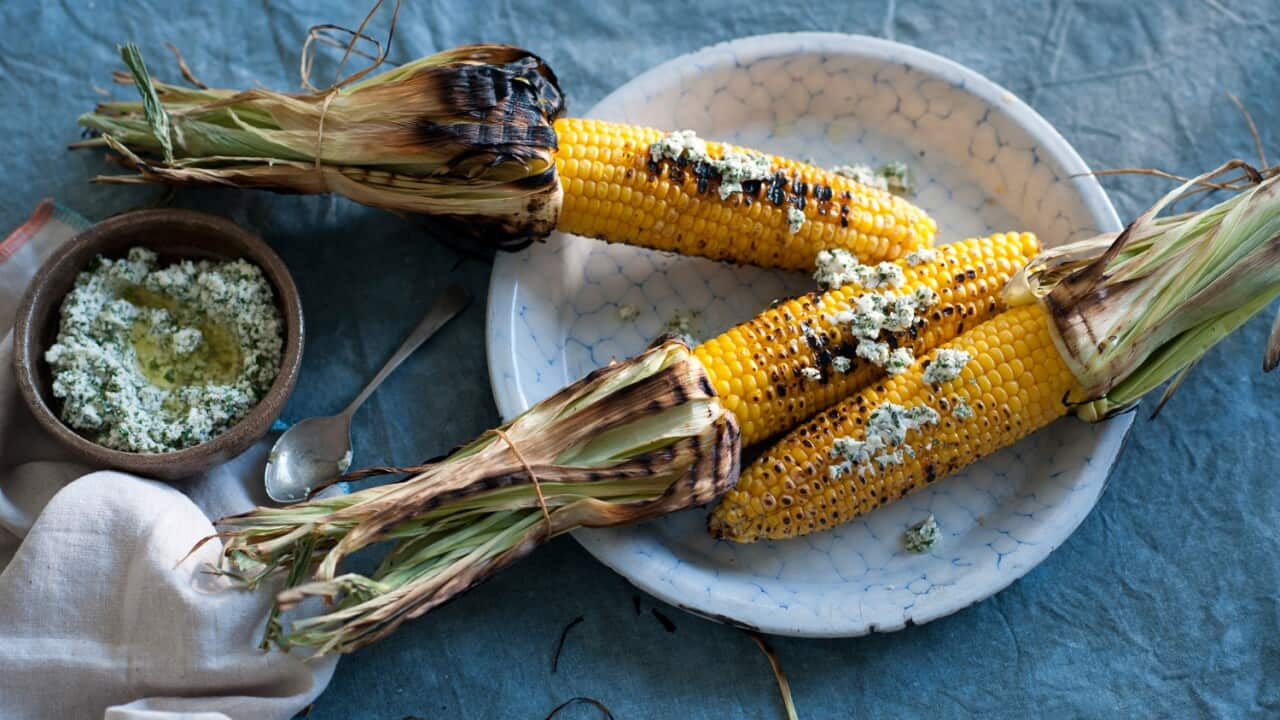At a glance
Ease of culture: Moderate
Where: All zones
Best climate: Warm to hot conditions
When: Spring and summer
Spacing: 25cm
Harvest: 8-10 weeks
pH: 5.5-7
Climate
• Sweet corn likes warm to hot conditions and can be grown in all parts of Australia when conditions are favourable
• Daytime temperatures need to be consistently above 15°C for planting
• Spring and summer are the best seasons for planting in most areas. You can plant all year round in tropical areas.
Position
• Corn needs plenty of sunshine to thrive – at least 6 hours a day
• Strong winds can damage tall plants so choose a protected spot.
Soil
• Corn is a demanding crop nutritionally, so the soil needs to be very well-prepared and enriched
• Dig over the soil to a spade’s depth and incorporate a wheel-barrow load of compost and/or well-rotted manure per square metre
• Add organic fertilisers, such as blood and bone and pelletised chicken manure as well, and till it all through
• Hill the soil to improve drainage
• Water soil well and let sit for a week before planting
Box: Fresh Seed
Corn seed stored more than a year quickly loses viability, which reduces germination success when planting. Buy fresh corn seed every year and be sure to check the 'sow by" date on the pack before taking it home.
Sowing
• Corn seed is best sown directly in the soil, but it can also be raised in pots or tubes in a warm spot and planted after germination. This allows gardeners in cool areas to get an early start. It’s also a good option when weather conditions are wet, which will cause seed to rot and fail.
• Sow seed into moist soil 5-7 mm deep, 25cm apart, with 60cm spacing between rows. Plant 2-3 seeds per hole and thin out unwanted seedlings later. These can be transplanted to fill gaps.
• Water soil well and don’t water again until seeds germinate or they will rot. This does not apply when raising seed in pots, but do allow the mix to almost dry out between watering
• Seeds germinate in 10-14 days.
• Corn cobs are pollinated by wind. Pollen is shed from the male flowers at the top of the plant and floats downwards to make contact with the female flowers or 'silks" at the end of the immature cobs.
• Plant corn seed in blocks of three or more rows, rather than long single rows. This allows for a more even dispersal of pollen, producing cobs with even and consistent kernel production.
• Aim to establish 30 or more plants per sowing
• Plant a new crop every 4-6 weeks to guarantee an ongoing supply during the growing season.
Watering and fertilising
• Corn plants are large and fast-growing, so need regular feeding and watering
• Gradually increase the regularity and depth of watering as the crop develops
• Liquid feed the crop once per week with a mix of diluted kelp and fish emulsion at half strength
• When plants reach approximately 50cm high, hill the soil around the base of plants using a nutrient-rich blend of soil, compost and well-rotted manure, and a little blood and bone. This encourages more roots to develop, supporting plants in strong winds and increasing valuable uptake of moisture and nutrients.
• Follow up with a thick layer of pea or lucerne straw to help combat weeds and retain soil moisture
Harvesting
• Cobs are ready for harvesting about 3 weeks after flowering commences.
• The first sign of maturity is when the silks at the top of the cobs have turned brown.
• Peel back some of the protective husk and pierce a single kernel with your thumb nail. It should release a milky liquid. If it’s clear it needs more time. If there’s no liquid, the sugars have converted to starch, which means it’s over-ripe. This spoiling conversion can happen quickly, so check cobs daily.
• Twist cobs with a sharp movement downward to remove from plant.
• Most plants will form two or more cobs
• If cobs are ready, but you’re not, they will store well in the fridge for a week or so.

